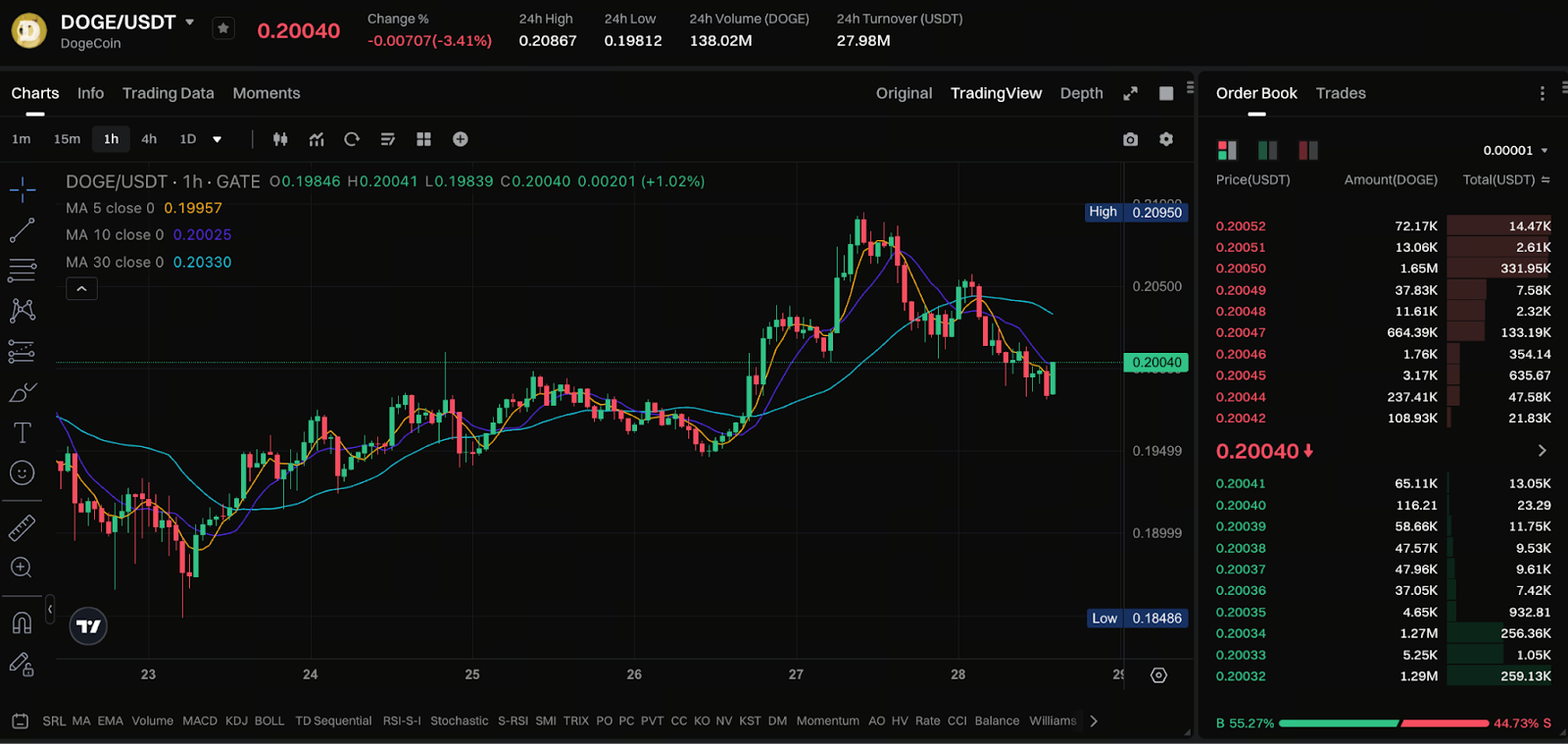Doge Price Rises Again: Is Dogecoin Facing Its Next Big Breakout?
What Is Doge (Dogecoin)?
Doge is the common nickname for Dogecoin, a cryptocurrency launched in 2013 and originally inspired by the “Shiba Inu” meme. Although it began as a joke, Doge quickly gained significant traction within the crypto community. Its key characteristics include fast block generation, an active user base, and a large circulating supply. Many users leverage Doge for micro-tipping and online interactions.
So, when you see the term “Doge,” understand that it’s simply an informal way to refer to Dogecoin.
Current Price and Market Performance

Chart: https://www.gate.com/trade/DOGE_USDT
As of now, Doge trades at approximately $0.20. Recent market data indicates:
- In early August 2025, Doge fluctuated between $0.22 and $0.23, with notable buying activity from whale investors (large holders).
- Analysts have suggested that, under the right conditions, Doge could potentially break above $0.25.
Three Key Factors Influencing Price
Support and Resistance Levels
Doge’s current key support sits around $0.19. A drop below this level could trigger further downside risk. Resistance is currently in the $0.23–$0.25 range; a breakout above this could open a new upward trend.
Whale Activity and Trading Volume
In August 2025, Doge saw over $200 million in large-scale purchases, signaling concentrated whale activity. This demonstrates that the market is driven not only by retail traders but also by significant institutional capital.
Overall Crypto Market Sentiment & “Meme” Effect
As a leading meme coin, Doge’s price often moves on sentiment—such as community hype or celebrity endorsements—rather than traditional project fundamentals. When major coins like Bitcoin drive the broader crypto market, Doge often benefits from the momentum.
How Should Beginners Approach Doge?
If you’re new to the market, consider the following approach:
- Learn before you participate: Understand that Dogo/Doge are nicknames for Dogecoin, and familiarize yourself with its origins and features.
- Control your position size: Given its volatility and sentiment-driven price swings, avoid overcommitting funds.
- Set stop-losses and profit targets: For example, place a stop-loss just below support and set profit targets before resistance is breached.
- Plan for both long-term and short-term strategies: If you believe in the meme coin narrative and are willing to hold for the long term, invest a small amount; if you prefer short-term trading, watch for signals of key price breakouts.
- Don’t ignore risk: Meme coins can surge, but they can also drop sharply if sentiment reverses.
Summary: Is Doge Worth Your Attention?
At its current price of around $0.20, Doge stands out among meme coins for its high recognition and liquidity. It can be a fun way to participate, but caution is essential. If you’re a crypto newcomer looking to “test the waters,” Doge offers a relatively low barrier to entry. However, if you’re seeking long-term technical value or the next “blue-chip” project, you should further evaluate Doge’s utility and potential for innovation. Ultimately, the key is to know how much you’re investing, understand the risks involved, and avoid blindly chasing price spikes.
Related Articles

2025 BTC Price Prediction: BTC Trend Forecast Based on Technical and Macroeconomic Data

Flare Crypto Explained: What Is Flare Network and Why It Matters in 2025

Pi Coin Transaction Guide: How to Transfer to Gate.com

How to Use a Crypto Whale Tracker: Top Tool Recommendation for 2025 to Follow Whale Moves

What is N2: An AI-Driven Layer 2 Solution
